Every thriving ecommerce brand eventually reaches a moment when “doing it all” internally starts holding the business back. Orders pile up, delivery expectations rise, and fulfillment becomes the difference between growth and gridlock. That’s where a 3PL steps in.
A third-party logistics (3PL) provider is more than just a company that stores and ships your products. It’s a strategic partner that helps brands simplify and scale the process of getting products into customers’ hands. From advanced warehousing and inventory management to same-day delivery and reverse logistics, a great 3PL quietly powers the experience your customers see as effortless.
This article breaks down everything you need to know about 3PLs and why they’ve become indispensable to modern ecommerce. You’ll learn what a 3PL does, how fulfillment and warehousing operations work behind the scenes, the benefits of outsourcing logistics, and how to find a partner that fits your business perfectly.
If your brand is ready to move faster, scale smarter, and serve customers better—this is where that journey begins.
Understanding 3PL Services
Warehousing
Operational excellence is more than just getting products from point A to point B. It involves creating a fulfillment experience that reinforces brand promise at every stage. As a result, third-party logistics (3PL) warehousing has evolved into the nerve center of that experience, transforming logistics from a cost line into a lever for growth and scalability.
The sophistication of how a 3PL picks, packs, and manages products can determine the efficiency of an ecommerce ecosystem. Every step of the pick-and-pack process is an opportunity to drive both efficiency and customer satisfaction. Advanced 3PLs deploy a mix of methodologies tailored to product type, order volume, and demand patterns.

Inventory
Inventory is capital in motion and managing it well influences both cash flow and customer satisfaction. The best 3PLs leverage demand forecasting, SKU-level visibility, and dynamic slotting to optimize stock placement and reduce holding costs.
For example, fast-moving SKUs are positioned near packing stations, while slower movers occupy higher or more distant racks. Predictive analytics flag reorder points before stockouts happen, and automated reporting allows merchants to make strategic decisions about product allocation across multiple fulfillment centers.
Most importantly, omnichannel synchronization allows brands to maintain a single source of truth for inventory across all channels including marketplaces, DTC platforms, and retail distribution. This unified visibility eliminates overselling, minimizes stockouts, and ensures that the customer experience remains seamless, no matter where a purchase begins or ends.
Fulfillment
Fulfillment has become a brand’s handshake with its customers. The right 3PL partner doesn’t just ship products; it orchestrates an ecosystem. From freight strategy to returns optimization, fulfillment excellence is now a cornerstone of sustainable growth.
- Full Truckload (FTL): FTL shipping is the gold standard for brands moving large, consistent volumes. It enables full utilization of space, predictable transit times, and reduced handling to drive down per-unit costs and minimize damage risk. FTL works best for predictable product lines or replenishment cycles, especially when fulfillment centers are strategically located to serve multiple markets with minimal transit lag.
- Less Than Truckload (LTL): LTL shipping allows multiple shippers to share space on the same truck. This is an invaluable option for ecommerce brands managing dynamic inventory or fluctuating order volumes. By paying only for the space used, LTL gives businesses flexibility without the capital burden of full loads.
- Same-Day and Expedited Shipping: Consumers now expect immediacy—same-day and next-day delivery have become differentiators that directly influence conversion rates and customer loyalty. 3PLs integrate with multiple carriers and dynamically assign orders based on location, service level, and delivery deadlines to ensure efficiency and reliability in every shipment.
- Kitting and Bundling: Kitting, or bundling multiple products into a single SKU, enables ecommerce brands to create unique offers—whether it’s curated product sets, seasonal promotions, or subscription kits. Beyond logistics, effective kitting enhances the unboxing experience, strengthening brand affinity, and encouraging repeat purchases.
- Reverse Logistics: A frictionless returns process signals trust. 3PLs manage returns through automated systems that assess condition, process restocks, or direct items to secondary channels to reduce waste and recapturing value. Smart return tracking helps brands identify product quality issues or misalignment between marketing and customer expectations, turning operational feedback into strategic improvement.
Benefits of a 3PL
- Scalability and Flexibility: 3PLs allow brands to scale operations fluidly without overcommitting capital. As order volumes fluctuate, fulfillment capacity can flex up or down seamlessly. This elasticity helps executives plan for growth without overbuilding infrastructure or headcount.
- Speed to Market: With strategically located fulfillment centers and established carrier networks, 3PLs dramatically reduce shipping times. Whether launching in new regions or responding to sudden spikes in demand, brands gain faster access to customers.
- Cost Efficiency and Capital Optimization: Outsourcing to a 3PL eliminates the fixed costs of warehousing, labor, and equipment. Instead, brands pay for what they use. Economies of scale mean lower per-unit costs. This frees up capital for investments in growth initiatives.
- Advanced Technology and Visibility: Modern 3PLs integrate directly with ecommerce platforms and marketplaces to provide real-time inventory, order, and shipment visibility. Executives gain access to dashboards that turn logistics data into actionable insight that allows brands to identify trends, forecast demand, and track KPIs with precision.
- Geographic Reach and Global Expansion: 3PLs open doors to new markets without requiring physical investment. With international warehousing, customs expertise, and cross-border compliance, brands can expand globally while maintaining local delivery speeds.
- Risk Reduction and Operational Resilience: A diversified 3PL network mitigates the impact of disruptions, including everything from carrier shortages to regional weather events. Advanced providers use predictive analytics and contingency planning to reroute shipments or balance inventory in real time, keeping fulfillment steady when it matters most.
- Enhanced Reverse Logistics and Sustainability: Returns are an unavoidable part of ecommerce, but a well-managed reverse logistics program can turn them into a competitive differentiator. Many 3PLs now offer sustainable return solutions, refurbishing, or recycling goods efficiently. This not only reduces waste but supports corporate responsibility goals.
Finding the Right 3PL Service Providers
Choosing a 3PL provider is a strategic investment in your brand’s long-term scalability. The right logistics partner should feel like an extension of your operations, aligning with your goals and established ecosystem. While cost and capability matter, the real differentiator lies in finding a 3PL that delivers reliability, intelligence, and partnership in equal measure.

3PL Growth Engines
Fulfillment is one of the most powerful levers a brand can pull to shape customer experience, brand reputation, and growth trajectory. A well-chosen 3PL partner brings together the precision of advanced warehousing, the speed and flexibility of modern fulfillment, and the strategic depth of data-driven logistics. The right partner builds an ecosystem that moves your business forward.
As competition intensifies and customer expectations continue to rise, the brands that thrive will be those that treat fulfillment as a strategic differentiator and see their 3PL as a reflection of their brand’s promise in motion.



